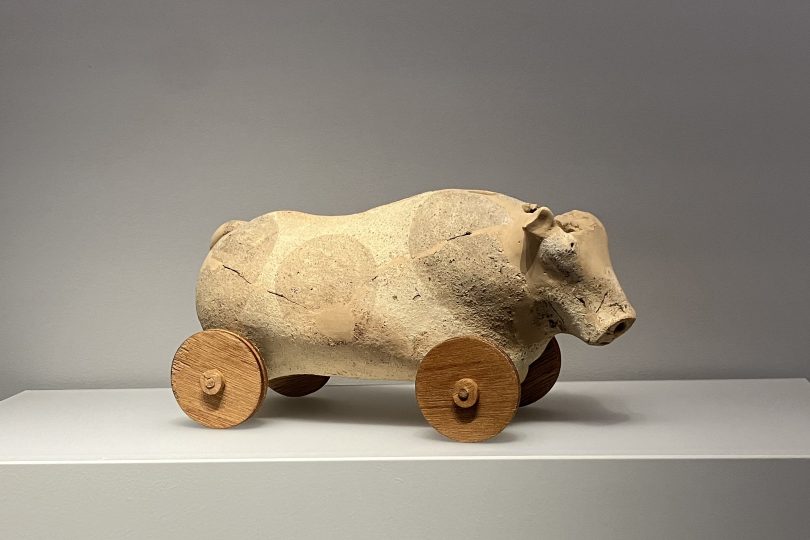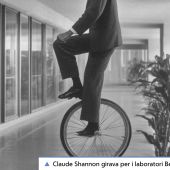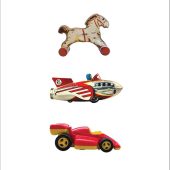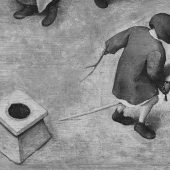The second of three posts linking my recent holiday in Crete with themes from Toy Theory. This toy, a clay figure of an ox with wooden wheels, is an exhibit in the Archaeological Museum of Chania. It is undated, but similar toys have been found around Mediterranean Europe and North Africa from around 1000 BCE.
Toy Theory sets up the argument, somewhere between a hypothesis and a thought experiment, that technological development has historically and prehistorically been driven at least as much by toy-like invention as by the fulfilment of instrumental challenges and needs.
Wheeled animals are strong evidence in support of this playful proposition. We know that the ‘invention of the wheel’ happened a long time ago, not least from the familiar themes of cartoons depicting cavemen carving heavy stone circles and axles in a multitude of jokes on primitive invention. The wheel has become an archetypal image of the emergence of human civilisation and its efforts to overcome nature and amplify bodily strength. It is generally assumed that wheels were developed in a teleological line of descent in the augmented transportation of heavy materials: from sledges, sledges on rollers, then spindles or axles with freely rotating discs.
However this timeline is not upheld by the archaeological record. Wheels-on-axles seem to have originated in Mesopotamia around six thousand years ago, but appear to have been used to carry religious statues in ritual processions rather than transporting goods. Practical farm vehicles with wheels and axles were not widely used for another two thousand years. And the Middle Eastern cultures that introduced the wheel to Europe subsequently abandoned it as a primary mode of transportation in favour of the pack animal.
Thus, the commonly held timeline of invention – that machines designed for the pressing needs of transport, manufacture, warfare, etc. are subsequently modelled and scaled down by an indulgent adult for children’s play – is upended: play precedes practicality. Wheeled toys are “best explained as a pure discovery or invention – the visualisation of a mechanical device and the making of a model” (Ekholm 1946).
But this animal also stretches the notion of ‘model’: it is recognisable as a depiction of an ox, but a strange, dream-like, ox, one with wheels instead of legs, a hybrid of nature and machine. As a kinaesthetic machine however, it makes perfect sense. This ox, fashioned to fit the scale of a child’s hand and the sweep of their arm, was pushed backwards and forwards, released to trundle down a slope, or in a longer continuous wheeled gallop, the child crouched, squatting-hopping along. Many ancient wheeled animals from across the world featured a hole drilled through their noses, some still with the string or cord with which a child would have pulled them along. The mechanical aspects of these toys challenge dominant notions of aesthetics and symbolism then: they clearly cannot denote actual animal bodies and locomotion, but neither are these wheels abstraction, ornament or stylisation in the ways that pre-industrial non-naturalistic art is generally interpreted. Aesthetics follows non-instrumental function, and a sort-of animal looks back not to an actual referent but is a model, looking forward to its mechanical instantiation in play – a copy without original.




